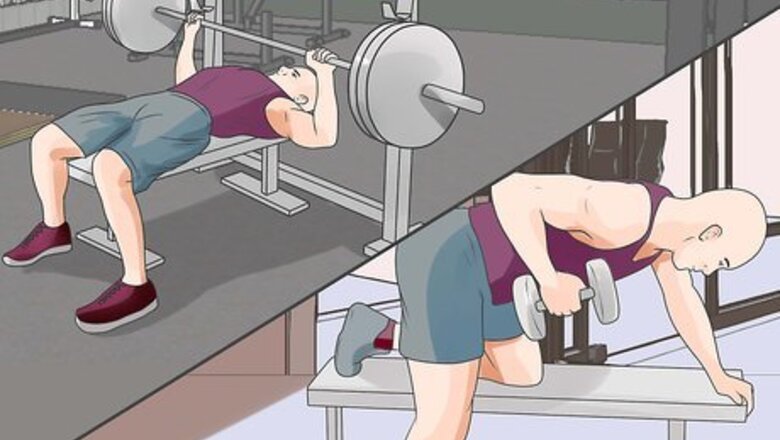
views
Toning and Building Muscle
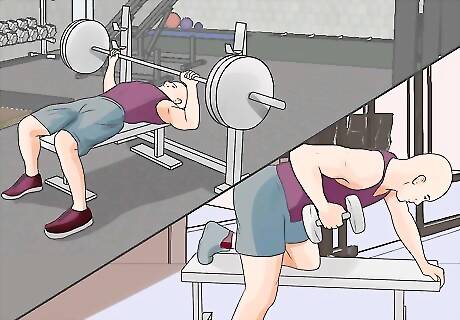
Do back, chest, and shoulder exercises 3 times a week. This section lists some popular exercises for getting a sexy back by strengthening your back, shoulders, and chest. You’ll need dumbbells (5 to 10 lb for women, 10 to 20 lb for men), a workout mat, and running shoes.

Do the cobra pose. This is a popular yoga pose that stretches and strengthens the chest, shoulders, and upper and lower back: Lie face down on the mat, with your elbows bent and hugged in at your sides, and your hands palm down, in line with or underneath your shoulders. Your legs should be stretched straight back, with the tops of your feet flat against the floor. As you inhale, slowly straighten your arms to list your chest off the floor. As you do this press the tops of your feet and thighs, and your pelvic bone into the floor. While your chest is lifted your tailbone should draw down towards your pelvic bone, and your stomach should be firm. Your buttocks should be firm but not flexed to the point that they are hard. Draw your shoulders away from your ears so that your shoulder blades melt down your back. You should feel a lift through your sternum, without your front ribs pushing forward. Think of the back bend as being distributed evenly along your whole spine. Hold this pose for 15 to 30 seconds. If you feel comfortable with it, you can lift your legs up as well. For an added punch, you can lift your arms off the floor and hold them straight out in front of you, moving into a superman pose. Exhale as you return to your starting position (lying face down on the mat), then repeat 9 more times (for 10 reps total).
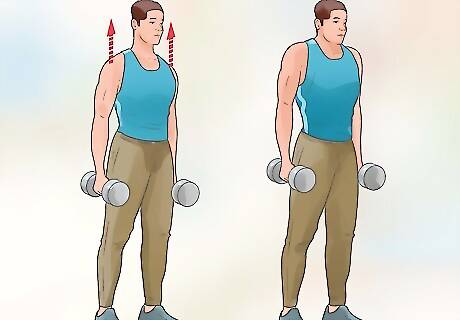
Tone your upper back with shoulder shrugs. Grab a dumbbell in each hand and stand with good posture. Your feet should be hip-width apart. Throughout this exercise your arms should hang naturally at your sides. Lift your shoulders towards your ears, as though you are shrugging. Hold for 3 seconds, and then slowly lower them back down. Repeat with 2 sets of 10 repetitions.
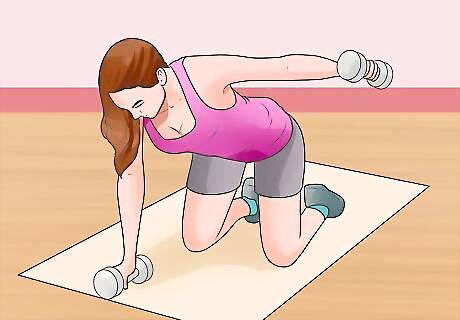
Do kneeling reverse flies. These will help tone and build muscle in your back, arms, and abs: Kneel on all fours, being sure to keep your hands aligned under your shoulders, and your knees aligned under your hips. Hold a dumbbell in each hand. Flex your abs (this will pull your stomach in and make it feel firm), and then steady yourself in preparation for lifting your right arm out to the side. Keeping a slight bend in your elbow and your palm facing down, lift your right arm out to the side until it is even with your shoulder. Lower the arm back down slowly, and repeat 14 times (for a total of 15 reps) before switching to your left side. Do 2 sets of 15 reps on each side.
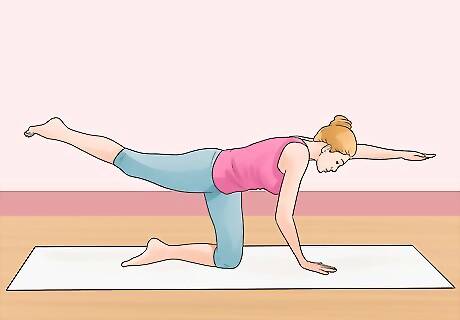
Do the bird dog exercise. This will help work your upper and lower back, as well as your legs and core. You don’t need weights for this exercise. Get on all fours, with your knees aligned under your hips and your hands aligned under your shoulders. Your neck should be long, with your face (and eyes) pointed downward. Make sure you feel steady and that your weight is evenly distributed between your arms and knees. Tense your ab muscles as you slowly slide your right leg backwards and lift it off the floor so that it is straight out behind you, at a height that is in line with your hips and back. At the same time as you lift your right leg, lift your left arm up and hold it out straight out in front of you. Hold the position for 10 seconds before slowly returning your arm and leg to the ground. Repeat with the right arm and left leg. Alternate the sides so that you have between 5 and 12 reps on each side. Your back should stay in the same position (straight, not dipped or hunched) during the entire exercise. If you can’t hold it steady while you raise your arm and leg, start with just the legs until you’re feeling more secure. Once you’ve mastered this, you can try the challenging bird dog plank variation, in which you lift opposite arms and legs while in a plank position (as opposed to being on your hands and knees).
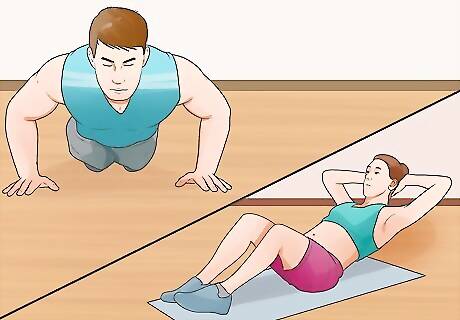
Don’t forget about the classics. Classic moves like pushups, planks, and sit-ups will help build your core, improve your posture, and strengthen and tone your back. You might even do these during some of your breaks at school or the office, if you can find a quiet place to do them. You can do wall pushups (a standing variation of floor pushups) just about anywhere.
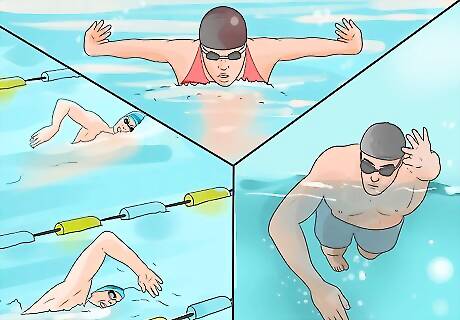
Go swimming. Swimming is great because it gives you a cardio workout while strengthening and toning your muscles. It’s a great option if you have any joint or muscle problems as it is low impact.
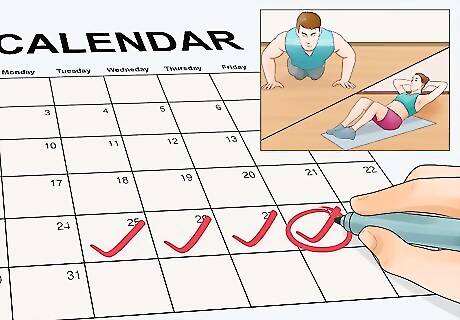
Be smart. You want to challenge yourself by doing at least 5 of these exercises 3 times a week, but you also don’t want to overdo it. Give yourself a break in between workout days so that your muscles have time to repair themselves. If you want more of a challenge, try increasing the reps or the weight for each exercise.
Improving Your Skin
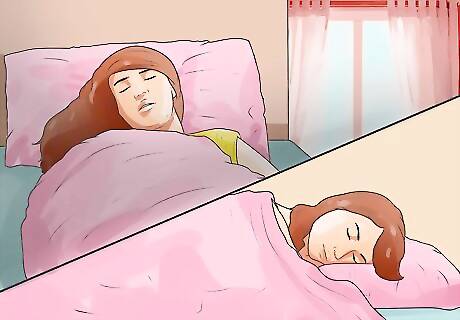
Reduce Stress. Stress increases the production of glucocorticoid, which can lead to skin abnormalities. Two surefire ways to reduce stress are to get enough sleep and to exercise regularly. Adults should get 7 to 9 hours of sleep each night. Teens should get between 8.5 and 9.5 hours of sleep a night.
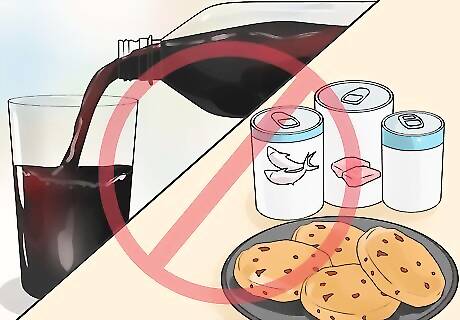
Change your diet. A healthy diet might not automatically equal great skin, but it can definitely help. Follow these tips to reduce your susceptibility to acne: Don’t eat too many carbs. Healthy carbs are okay, but even then, eat them in moderation. Definitely avoid white flour, bread, cookies, sugary soda and other junk foods. Minimize your dairy intake. It’s okay to have small amounts of cultured, whole milk dairy products containing natural probiotics (e.g. yogurt and kefir), but avoid cheese and ice cream as much as you can. Eat foods rich in omega-3 fatty acids. This include salmon, flax seeds, walnuts, and spinach, among other things. Eat your fruits and veggies. These are natural sources of antioxidants, zinc, selenium, vitamin A and fiber, which can all help with acne. Try to get as many of your vitamins and nutrients from food instead of supplements, as supplements are not always as effective. In fact, supplements can even be dangerous as they can lead you to take too much of a certain nutrient.
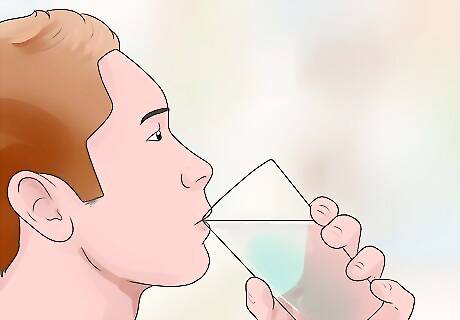
Stay hydrated. Drinking enough water keeps your blood circulating and helps flush out internal toxins. There is little research to prove that toxins cause breakouts, but experts still recommend drinking plenty of water. To figure out how much water you should drink, divide your body weight in pounds in half. That’s how many ounces of water you should drink each day. If you’re 150 pounds you should drink at least 75 ounces of water each day — more if you live in a hot climate or have an active lifestyle.
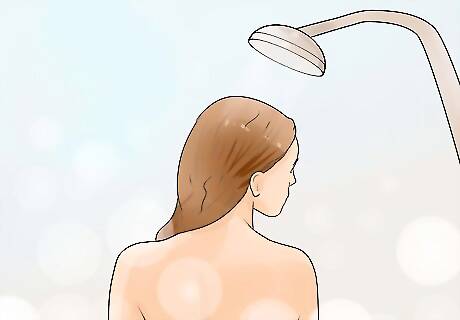
Stay clean. Keeping the skin clear of sweat and oil will help reduce the chances of acne developing. If you have oily skin, you need to shower every day. You should also be sure to always wear clean clothes. If you can’t shower immediately after sweating, give your skin a swipe with some rubbing alcohol or other cleansing agent, and put on a clean, dry shirt. Wearing the same shirt twice could make you more likely to break out. Even if the shirt doesn’t smell bad or look dirty, it could still have old skin cells, oils, and bacteria in it from the last time you wore it.
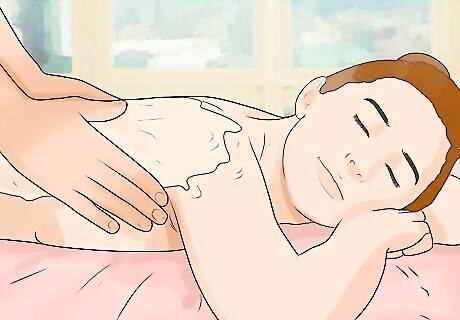
Get skin treatments. Dermatologists offer back facials and light peels that can help with acne. These can be done once a month until your skin clears up. If you have acne you might want to avoid exfoliating your skin, as this can cause the acne to spread to other areas of your back. The friction of exfoliation or scrubbing can also irritate the skin and cause acne to become worse. If your skin is just dry and a little dull, with few to no breakouts, you can exfoliate a few times a week to reveal smoother, glowing skin. Just be sure to follow it up with a moisturizer.
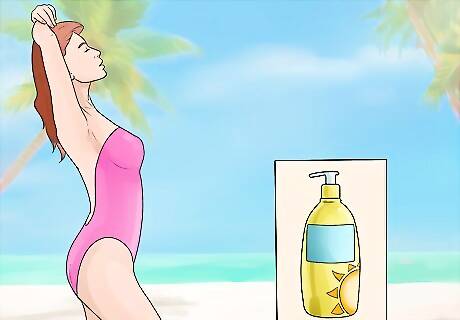
Try some light sun exposure. This is only recommended for people who have severe acne. Be sure to do this only under the supervision of a medical professional. Remember that sun can cause enormous damage to the skin, including wrinkles, freckles, and skin cancer, so this really is only a last resort after you’ve tried everything else. Again, do this under the supervision of a medical professional. In general, sun will actually make your skin worse, so protect your skin by using sunscreen (non-comedogenic if you have acne) whenever you’re out in the sun.
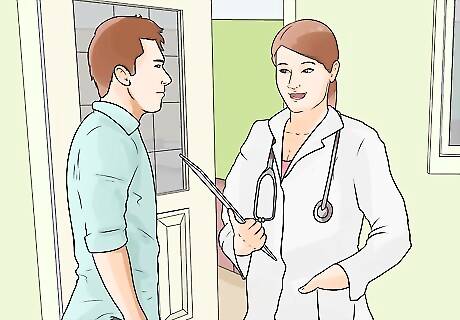
See a doctor. If you are really struggling to get rid of your bacne (back acne), you may want to try seeing a doctor. There are different types of bacne, and not all of them can be treated in the same way. A common type of acne that occurs on the back is called pityrosporum folliculitis. It has a different cause than the more well-known acne vulgaris, meaning it needs a different cure. Pityrosporum folliculitis is caused by yeast, so the way to treat it is to starve the yeast in your body, and use medications and skin treatments that target yeast specifically.
Improving Your Posture
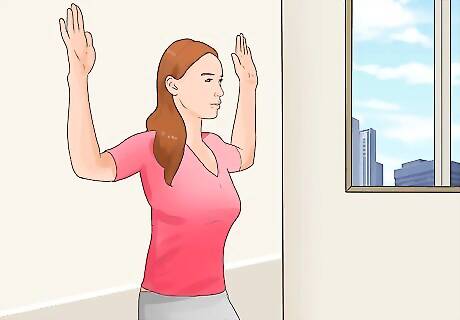
Test your posture. This test will help gauge how good your standing posture is: Stand with your heels 2 to 4 inches away from a wall, and with your head, shoulder blades, and buttocks touching the wall. Reach one hand back and, placing your palm flat against he wall, slide your hand behind your lower back curve. The space between your lower back and the wall should measure roughly one hand’s thickness. If there’s too much space, tightening your abs will help flatten the curve in your back. If there’s not enough space, gently arch your back until you can fit your hand between your back and the wall.

Stop slouching. Computer work, lab and research-heavy jobs, and inactive lifestyles can weaken your back, chest and arm muscles, and cause you to slouch. Slouching can make you look saggy, tired, and heavier than you are. Improving your posture will instantly boost the appearance of your back. It will also pull in your stomach and make you look taller and slimmer.

Know what good standing posture looks like. Follow this checklist to ensure that you have good standing posture: Keep your shoulders back and relaxed. Don’t force them back to the point that you’re uncomfortable. Pull in your stomach. Again, there is no need to be forceful here. Just gently pull in your stomach muscles (you’ll likely feel the lower part suck in and the upper part tense a little). Stand with your feet hip-width apart. Ensure that your weight is evenly balanced between both feet. (You can shift side to side and back and forth a bit to get a sense of how your weight distributes itself on your feet.) Allow your arms and hands to hang naturally at your sides. Keep your knees relaxed, with a gentle bend in them. Ensure that your head is balanced on your neck. Your head shouldn’t be tilted in any direction. Your neck should feel like it connects in a long, straight line with your spine, as if a string is attached to the top of your head and is gently pulling you upward.
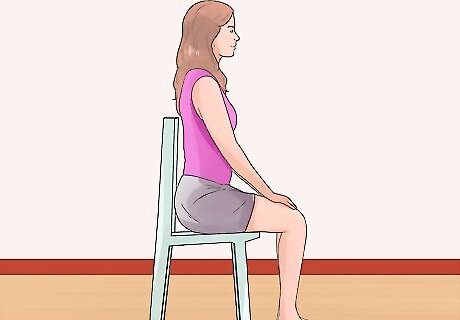
Know what good seated posture looks like. Follow this checklist when you’re seated to ensure that you have good posture: Your feet should rest flat on the floor when you’re seated so that your knees are level with your hips. If this isn’t possible, get a foot rest. Sit back in your chair so that the chair supports your lower back. If the chair doesn’t touch your lower back, use a pillow or rolled-up towel behind your lower back. Raise your head toward the ceiling, and slightly tuck in your chin. Your upper back and neck should be straight but comfortable. Your shoulders should be relaxed. Make sure they’re not slouching, climbing up towards your ears, or pulled backwards.
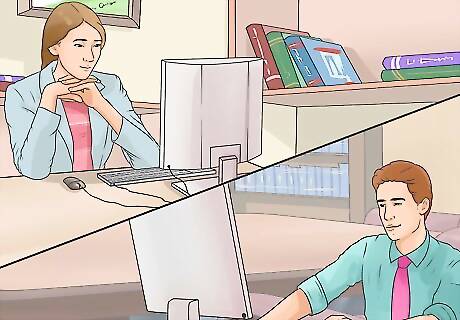
Ensure that your work environment isn’t contributing to your poor posture. It’s particularly common to experience postural issues when working at jobs that require you to sit at a desk. Having a proper setup can improve your posture, and prevent pain and injuries. Your desk should be set up so that it’s as easy for you to sit as tall as possible while you work. Your screen should be at eye level and you shouldn’t have to turn or lean forward to see it. Your chair should support your lower back, and keep your hips and knees on level with one another. Your elbows should be kept at 90 degrees and close to your sides while working, so ensure that your keyboard does not sit higher up on your desk or too far away.
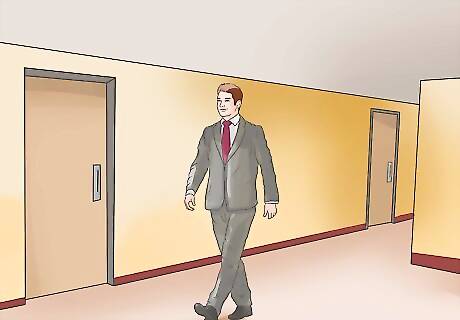
Take regular breaks. If much of your day is spent hunched over books or a computer, it’s necessary to take regular breaks get up and move around, and stretch. Ideally you should stretch and/or get out of your chair every 20 to 40 minutes. If you can’t take breaks every 20 to 40 minutes, at the very least remember to do some gentle stretches while sitting, and/or to change your position in your chair.
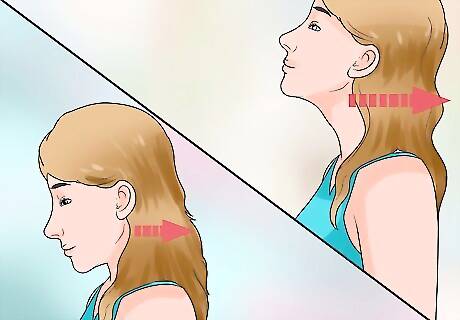
Fix your posture while you are at your desk. Improve your neck posture if you are used to looking at a computer screen. Extend your neck backwards, like you are trying to touch it to a wall, hold for 3 seconds and return it. Repeat 10 times, doing several sets throughout the day. This exercise will improve your neck muscles so that you’re less likely to slope forward when you stand. It will also remind you to keep your back straight while you work.

Correct your posture with a wall exercise. Stand against a wall with your heels 2 to 4 inches away from the wall. Pull your shoulder blades together and touch them to the wall. Then, tip your chin down slightly and touch the back of your head to the wall. Ensure that your back isn't over-arched and your shoulders aren't lifted toward your ears. Hold the position for several minutes until it feels comfortable. Return to the wall 2 to 3 times a day to check that you are keeping the correct posture.
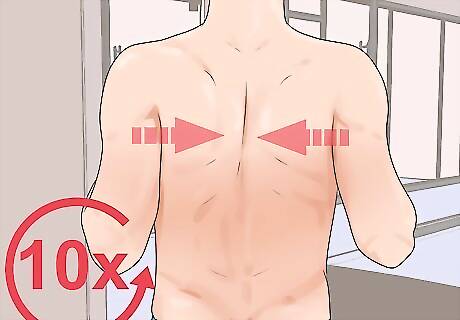
Do shoulder squeezes to stop slouching. These are helpful if your arms tend to fall forward. Simply squeeze your shoulder blades together and hold them for 3 seconds. Release and repeat 10 times. Perform several sets throughout the day. You can do this at your desk, on the couch, while you’re on the phone — really while you’re doing anything.
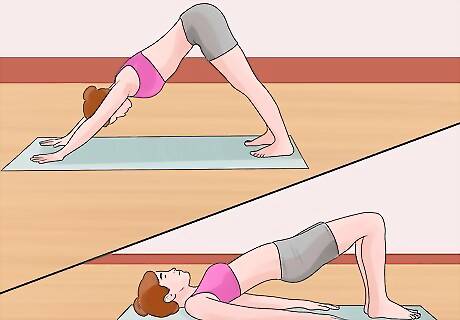
Strengthen your core. Having a strong core will help improve your posture. Try doing yoga or pilates a few times a week. This will help build your core muscles and also strengthen and tone the rest of your muscles.












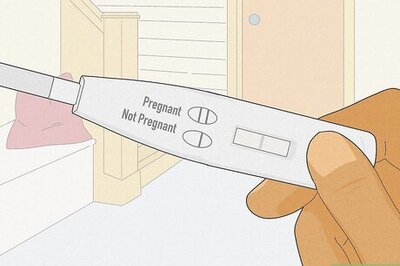







Comments
0 comment